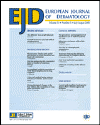IRANDERMA |
|
Selected Papers |
New treatments for old diseases
Acitretin for the treatment of cutaneous T-cell lymphoma
Am Acad Dermatol 2013; February
In a clinical trial on 32 patients with CTCL, acitretin was an effective and well-tolerated therapy with a n overall response rate of 59%. An additional rationale for the use of acitretin in CTCL is the theoretical protective effect from development of cutaneous squamous cell carcinoma in those at high risk….
Apremilast for the treatment of lichen planus
Am Acad Dermatol 2013; February
Apremilast is a novel phosphodiesterase type IV inhibitor, which promotes the accumulation of the intracellular cyclic adenosine monophosphate and so ultimately inhibits the production of various inflammatory mediators. Apremilast has been used successfully in the treatment of chronic inflammatory conditions, such as psoriasis and atopic dermatitis and reported to be effective in a recent clinical trial on 10 patients with lichen planus….
Nadifloxacin for treating acne
Int J Dermatol 2011; March 2011
A randomized, prospective, split-face, double-blind study on 37 subjects with acne has revealed that 1% nadifloxacin cream is an effective, safe and well-tolerated topical treatment in mild to moderate acne vulgaris....
Phenol peel for angiosarcoma
Int J Dermatol 2009; May
Cutaneous Angisarcoma is a rare malignant neoplasm of vascular origin which is highly aggressive. Although surgery, wide-field radiation, and chemotherapy are recommended for this tumor, only 20% of patients are disease free at 5 years. A clinical study done in Japan on 3 patients with angiosarcoma, has revealed that phenol application can be a supportive treatment for this tumor....
Clobetasole gel for treatment of herpes labialis
JEADV 2008; March
A pilot study done on 81 subjects have revealed that combining valacyclovir with clobetasol gel is both effective and safe in the episodic treatment of recurrent herpes simplex labialis...
Hyaluronic acid for oral ulcers
JEADV 2008; May
Dermatologic applications of Hyaluronic acid (HU) now encompass its usage as a filler and also for the stimulation of wound healing and as a drug vehicle in topical formulations. A clinical study done in Korea has shown that topical application of 0.2% HA gel is safe and effective in treating patients with recurrent oral ulcers....
Botulinum Toxin for psoriasis
JEADV 2008; April
In a study done by Zanchi et al, Botulinum toxin type-A (BoNTA) reported to be effective in treating 15 patients with inverse psoriasis. It targets the neuroglandular junction to reduce local sweating, thereby preventing the resulting skin maceration and secondary infection, but it may also inhibit the liberation of neuropeptides....
Pregabalin; another drug for intractable pruritus
Am Acad Dermatol 2008; February
Pregabalin, a new anticonvulsant drug has been used successfully in treating 3 patients with chronic generalized pruritus. It seems that this beneficial effect is mediated through its counteracting effect on the central sensitization processes...
Oxymethazoline for the treatment of erythema and flushing of rosacea
Am Acad Dermatol 2008; February, AB9, P400
Oxymethazoline is a potent selective alpha adrenergic receptor agonist. Anecdotal reports have shown that topical applications of Oxymethazoline 0.05% solution is an effective treatment for erythematotelangiectatic rosacea….
A new RAMBA for treatment of psoriasis
JEADV 2007; September
Dapsone gel 5% for the treatment of acne
Am Acad Dermatol 2007; March
Dapsone, a sulfone that has both anti-inflammatory and antimicrobial properties is shown to be an effective treatment for acne. A recent randomized study has revealed that dapsone gel 5% is an effective, safe and well-tolerated treatment for acne, with a rapid onset of action...
Miltefosine for the treatment of cutaneous leishmaniasis
Int J Dermatol 2007; April
Miltefosine is an alkylphosphocholine analog originally developed as an antitumor agent. A case report has shown the beneficial effects of this drug in the treatment of old world cutaneous leishmaniasis...
Topical zinc oxide for the treatment of warts
Int J Dermatol 2007; April
Topical zinc oxide 20% ointment can be useful in treating warts. In a randomized, double-blind controlled study, Khattar and colleagues have shown a cure rate of 50% for this simple remedy...
Rituximab for the treatment of dermatomyositis
Am Acad Dermatol 2007; January
Rituximab (MabThera) is a monoclonal anti-CD20 antibody that rapidly and exclusively depletes B cells through antibody-mediated cell cytotoxicity, complement-mediated cytotoxicity, and apoptosis. A recent study has revealed the beneficial effects of this drug in the treatment of the skin manifestations of dermatomyosists in three patients...
Topical retapamulin for the treatment of secondary infected dermatitis
Am Acad Dermatol 2006; December
Retapamulin ointment 1% is a novel topical antibacterial drug. Results of a randomized controlled trial have revealed that Retapamulin ointment 1% (bid) for 5 days is as effective as oral cephalexin for 10 days in the treatment of patients with secondary infected dermatitis...
Butorphanol for treatment of intractable pruritus
Am Acad Dermatol 2006; March
Recent data suggest that generalized pruritus results from an imbalance between the mu and kappa opioid systems. Kappa-opioid receptor stimulation inhibits mu-receptor effects both centrally and peripherally. A recent case series has shown that this Butorphanol, a kappa-opioid receptor agoinist and mu-opioid receptor antagonist, in a one mg/day dose is an effective treatment for intractable pruritus associated with inflammatory skin diseases or systemic diseases...
Imiquimod 5% cream for vulvar Bowen's disease
Int J Dermatol 2006; February
Current treatments for Bowen's disease include cryotherapy, curettage, laser therapy, surgery, photodynamic therapy and topical 5-FU. According to a recent case report, imiquimod could be an effective, tolerable, safe and new tool for treating vulvar Bowen's disease...
Treatment of Lentigo Maligna (LM) with Imiquimod
Arch Dermatol 2005;April
LM occurs most commonly on the face in elderly patients as a slowly growing asymmetric brown macule. This pilot, open-label study showed that topical 5% imiquimod cream is a valid treatment modality for LM in patients who cannot undergo surgical excision. The principal pharmacologic effect of imiquimod is augmentation of both innate and adaptive immune responses...
Pioglitazone for psoriasis
Int J Dermatol 2005; April
A controlled study has shown that pioglitazone might be an efficacious and safe drug for the treatment of plaque psoriasis. This drug is a PPAR (peroxisome proliferator-activated receptor) agonist and is currently being used as an insulin-sensitizer in type 2 diabetes. Pioglitazone may also has therapeutic role in psoriasis with its inhibitory effects on keratinocyte proliferation..
Complete resolution of recurrent calciphylaxis
with long-term intravenous sodium thiosulfate
Authors: Subramaniam, Kavitha; Wallace, et al.
Source: Australasian Journal of Dermatology,
Volume 49, Number 1, January 2008 , pp. 30-34(5)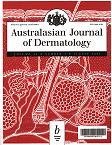
Abstract
A 35-year-old morbidly obese woman on home haemodialysis presented with painful indurated subcutaneous nodules histologically characteristic of calciphylaxis. After failing to respond to conventional treatment, she was commenced on an intravenous infusion of 25 g of sodium thiosulfate three times per week. Two weeks after commencing sodium thiosulfate, the pain resolved completely. By 12 weeks, the lesions had healed and the infusions were ceased. Two months later, skin lesions recurred, but resolved again within 3 months of recommencement of sodium thiosulfate treatment, which was continued for 8 months. The treatment was well tolerated. There has been no recurrence of lesions in the 18 months since the cessation of sodium thiosulfate. Clinical trials to determine the optimum dose and duration of therapy for sodium thiosulfate treatment of calciphylaxis should be given priority because of its high rate of success in treating what is otherwise a severe and mostly lethal condition.
Liegl B et al.
Am J Surg Pathol 2008 Apr; 32:608.
Abstract
Perivascular epithelioid cell tumors (PEComas) are apparently benign mesenchymal tumors that can easily be misdiagnosed as malignant melanoma. These authors performed a retrospective analysis and describe the clinicopathologic spectrum of 10 primary cutaneous PEComas.
Ten patients (8 female; age range, 15–82), none with tuberous sclerosis, presented with painless, slowly growing dermal nodules or plaques. Eight tumors were located on the legs and two on the back. Most tumors involved the dermis, with extension to the subcutis. The median size was 1.5 cm. The tumors had a nested or trabeculated growth pattern of epithelioid or epithelioid/spindle cells in a background rich in vessels. The proliferative cells ranged from clear to palely eosinophilic or granular cytoplasm. Mitotic activity was <1 per 10 high-powered fields. The cells were positive for HMB-45, Melan A and microphthalmia transcription factor. Epithelial markers (pan-keratin and epithelial membrane antigen) were negative. The investigators also noted smooth-muscle differentiation, with positive desmin and smooth-muscle actin.
In 20% of patients, the tumors had been misdiagnosed as malignant melanomas; eight tumors with positive margins were completely excised, and two were partially excised. One patient with a melanoma misdiagnosis underwent sentinel lymph node biopsy, with negative results. After a median follow-up of nearly 4 years, no recurrences were observed.
Comment: Although PEComas are frequently identified in the retroperitoneum, abdominal viscera, and pelvic sites, only about 20 cases have been described in the literature. No definitive association of these neoplasms with the tuberous sclerosis complex has been made. PEComas and malignant melanomas may have overlapping histologic and immunohistochemical features. Awareness of primary cutaneous PEComas will increase the identification of this apparently benign entity and avoid inappropriate treatment.
Relationship between the atopy patch test and clinical expression of
the disease in children with atopic eczema/dermatitis syndrome and
respiratory symptoms
Authors: Fuiano, Nicola; Incorvaia, Cristoforo; Prodam, Flavia; Procaccini, Deni A.; Bona, Gianni
Source: Annals of Allergy, Asthma and Immunology, Volume 101, Number 2, August 2008 , pp. 174-178(5)
Abstract
Background: The atopy patch test (APT) may be the only positive skin test result in patients with either atopic eczema/dermatitis syndrome (AEDS) or respiratory abnormalities with or without AEDS.
Objective: To investigate the possible significance of APT to dust mite by comparing the positive result to this test with that of the skin prick test (SPT) in patients with different characteristics.
Methods: A total of 297 individuals (178 boys and 119 girls) aged 5 to 221 months (mean [SD] age, 64.5 [42.1] months; median age, 58 months) were included in this study. Participants were divided into 4 groups: current AEDS, current AEDS and respiratory symptoms, past AEDS and respiratory symptoms, and respiratory symptoms with neither current nor past AEDS (control group). All the patients underwent SPT and APT using house dust mite extract. Results: In the study groups, the rate of positivity was significantly higher for APT, whereas in the control group, there were significantly more positive results to SPT (P < .001 for both). Multivariate analysis showed that there was a high probability of a positive APT result in patients with AEDS (odds ratio [OR], 17.4), with AEDS and respiratory disease (OR, 21.9), and with past AEDS and respiratory disease (OR, 22.8).
Conclusions: These patients with AEDS showed 2 different patterns of allergic response to allergens, one IgE mediated (as evaluated by positive SPT results) and the other cell mediated (as evaluated by positive APT results). The former seems to follow the so-called atopic march model, and the latter persists even after the disappearance of AEDS and is likely to be implicated in the pathogenesis of respiratory allergy.
Change in prevalence of atopic
dermatitis between 1986 and 2001 among children
Stensen, Lise
et al.
Allergy and Asthma Proceedings, Volume 29, Number 4, 7/8 2008 ,
pp. 392-396(5)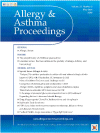
Abstract
The prevalence of atopic dermatitis (AD) has increased during the last decades. Whether the prevalence is still increasing or has reached a stable level during the 1990s is still not certain. The purpose of this study was to compare the prevalence of AD in two different random samples of Danish children studied in 1986 and 2001 and to examine the associations between AD and other atopic outcomes. Two samples of children and adolescents living in urban Copenhagen were drawn at random from the civil registration list in 1986 and 2001. A total of 527 and 480 subjects participated in 1986 and 2001, respectively. Subjects were classified as AD cases when responding affirmatively to the question "Do you have, or have you ever had, significant and recurrent episodes of eczema in the folds of your elbows or knees?" Immunoglobulin E (IgE) measurements, skin-prick tests, and airway responsiveness tests were performed. The prevalence of AD increased from 17.3% in 1986 to 27.3% in 2001. For male subjects, the prevalence of AD was 16.4% in 1986 compared with 25.7% in 2001. For female subjects, the prevalence of AD was 18.1% in 1986 compared with 28.7% in 2001. Elevated levels of IgE, airway hyperresponsiveness (AHR), and rhinitis were statistically significant predictors of AD. The prevalence of AD has increased significantly from 1986 to 2001 in urban Copenhagen, Denmark. In addition, we found that AD was significantly associated with AHR, rhinitis, and elevated levels of IgE, supporting the idea of the atopic triad.
Treatment
Following an Evidence-Based Algorithm versus Individualised
Symptom-Oriented Treatment for Atopic Eczema
A Randomised Controlled Trial
Jochen Schmitt et al.
Dermatology
2008;217:299-308
Abstract
Background: Evidence-based treatment algorithms, successfully established for asthma, are missing for atopic eczema (AE). Objectives: To investigate whether treatment according to an evidence-based algorithm is an effective and applicable concept for the management of AE.
Methods: Based on a systematic literature review, we developed an evidence-based severity-score-oriented treatment algorithm for AE and compared its effectiveness to that of an individualised symptom-oriented treatment (individual therapy) in a randomised controlled trial. Sixty-three participants were randomised to algorithm (n = 32) or individual therapy (n = 31) and treated accordingly for 12 months. Study end points included difference between baseline SCORAD and mean SCORAD under treatment (primary end point), quality of life and treatment utilisation. Analysis was by intention to treat (registration: ClinicalTrials.gov:NCT00148746).
Results: No statistically significant differences in clinical or subjective response were observed between groups. Treatment following the algorithm and individual treatment both effectively controlled AE. Mean SCORAD reductions were 47% (95% confidence interval, CI = 38-55; algorithm) and 42% (95% CI = 29-54; individual). Clinical response was paralleled by improved quality of life in both groups. Physicians adhered to the algorithm option in 93% of their treatment decisions.
Conclusion: Treatment following an evidence-based algorithm is an effective and applicable concept for the management of AE but does not show clear advantages compared to individualised treatment in a dermatological setting.
Women
dermatologists publish as much as men
J Am Acad Dermatol 2009; 60: 63-69.
Abstract
Over the last three decades, the
medical profession has included more and more women. Indeed, in
2006, 28% of American medical doctors were women against 8% in 1970.
The percentage of women was even higher for dermatologists: in 2006,
40% of American dermatologists and 62% of student dermatologists
were women. However, it seems that the quota of university
promotions does not follow the same pattern. Whereas women are more
attracted to university careers, women dermatologists are found in
higher number in « junior » positions in university departments. In
2006, there were only 12% of women with a status of Professor or
head of department. Several elements come into play in university
promotions but one of the most important is linked to the number of
publications in high level journals. The authors therefore analysed
the proportion of women among the first authors and among the
« senior » authors (the last author of the publication), in articles
published over the last thirty years in the main American
dermatology journals. Between 1976 and 2006, the proportion of women
first authors of a high level article went from 12% to 48%.
Therefore women tend to publish more than men and we can therefore
not attribute their lack of promotion to a lack in scientific
productivity. Other elements must be investigated. The authors also
report that in publications were the senior author is a woman (the
« boss »), the first author also tends to be a woman, as opposed to
when the « boss » is a man.
Feramisco JD, Leitenberger JJ, Redfern SI, Bian A, Xie XJ,
Resneck JS Jr.
A gender gap in the dermatology literature? Cross-sectional analysis
of manuscript authorship trends in dermatology journals during 3
decades.
Impact of psoriasis on quality of life in Iran
Aghaei S. et al
Indian J Dermatol Venereol Leprol. 2009 Mar-Apr;75(2):220
Abstract
BACKGROUND: The Psoriasis Disability Index (PDI) questionnaire is a widely used instrument to measure psychological morbidity in plaque-type psoriasis patients.
AIMS: This study aimed to validate the Persian version of the PDI and to evaluate the impact of psoriasis on quality of life (QOL). METHODS: The English language version of the PDI was translated into Persian (Iranian official language) and was used in this study. The questionnaire was administered to a consecutive sample of 125 chronic plaque-type psoriasis patients and statistical analysis was performed to evaluate the impact of psoriasis on QOL. The other health-related QOL assessment tool included the Persian version of the Dermatology Life Quality Index (DLQI).
RESULTS: Overall, 125 patients who had received the PDI and DLQI completed all the questions. Reliability analysis showed a satisfactory result (Cronbach's a coefficient=0.92 and 0.79 for PDI and DLQI, respectively). There was a strong statistical correlation between mean PDI and DLQI scores, with mean Psoriasis Area and Severity Index (PASI) (P=0.005 and 0.02). Also, a significant correlation coefficient existed between DLQI and PDI (r=0.94). The higher the PASI index, the higher the PDI and DLQI scores, which indicated greater impact on QOL. In the patients with lesions on visible exposed skin areas, the correlation was statistically significant (P=0.002 and 0.01).
CONCLUSION: The Persian PDI is
an acceptable, reliable and valid measure of psychological distress,
with more suitable content validity than DLQI for assessment of
impact of psoriasis on QOL among psoriasis patients. Data provided
may improve the physicians' awareness of the importance of the
patients' QOL.
Excessive Body Weight and Smoking Associates with a High Risk of
Onset of Plaque Psoriasis
Katarina Wolk et al.
Acta Dermato-Venereologica
September 2009 doi: 10.2340/00015555-0711
Abstract
Accumulating evidence indicates that body weight, alcohol and smoking are associated with psoriasis. However, these factors have scarcely been investigated in relation to onset and disease activity at onset of psoriasis. A population-based case-control study was performed including 373 cases with onset of first-time plaque psoriasis within 12 months and matched healthy controls. Psoriasis activity was measured using the Psoriasis Area and Severity Index (PASI). Analyses were performed using conditional logistic regression. In multivariable analyses for each unit increment in body mass index, there was statistically significant 9% increased risk for psoriasis onset and 7% higher risk for increased PASI. Obesity (body mass index ≥ 30) compared with normal body weight was associated with a two-fold increased risk for psoriasis onset. Smoking was associated with a 70% increased risk for onset, but was not related to PASI. A positive association with alcohol drinking was observed among men, but not among women. No associations were observed for weight gain and use of smokeless tobacco. Our results indicate that excessive body weight and smoking are risk factors for onset of psoriasis and that higher body mass index increases the PASI of plaque psoriasis at onset.
How stress gets under the skin: cortisol and
stress reactivity in psoriasis
A.W.M. Evers et al.
Br J Dermatol. November 2010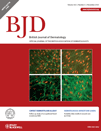
Clinical and histological evaluation of 1%
nadifloxacin cream in the treatment of acne vulgaris in Korean patients
Author(s) :
Int J Dermatol: March 2011
Abstract
"Unknown Risks" of non-steroid topical medications for atopic dermatitis
McNeill, Anne Marie; Koo, John Y. M.
International Journal of Dermatology, Volume 46, Number 6, June 2007
, pp. 656-658
Tacrolimus ointment is a nonsteroid treatment for atopic
dermatitis which is both effective and has a minimal side-effect
profile.
However, some clinicians may be reluctant to use tacrolimus ointment due
to the "unknown risks", meaning those that have not been uncovered in
human studies conducted thus far. Therefore, the available animal data
regarding the "unknown risks" of topical tacrolimus therapy are
reviewed, and a discussion of the interpretation of this available but
limited data is presented.
Animal studies:
Some of the fear on the part of clinicians regarding the use of topical
tacrolimus may come from the results of animal studies which showed an
increase in lymphoma and UV-induced skin cancer after treatment with
topical tacrolimus in animal models of carcinogenesis.
However, rigorous assessment of these studies suggest that it is
somewhat likely that these represent a species-specific response to
tacrolimus in an animal already predisposed to tumor formation, and
therefore may not be relevant in assessing the possibility of an
increased human health risk.
Conclusions:
Animal and human studies suggest that topical tacrolimus is a safe
alternative to topical steroids, with the major known adverse effect
being a transient burning sensation, compared with the known adverse
effects of topical steroids, including long-lasting ones. Therefore, in
the opinion of the authors, currently available data, including animal
studies, does not suggest that "unknown risks" of topical tacrolimus
need be any more concerning than the known side-effects of the topical
steroids.
Is
metronidazole 0.75% gel effective in the
treatment of seborrhoeic dermatitis? A double-blind, placebo controlled
sudy
Hamdi Ozcan, Muammer Seyhan, Saim Yologlu
European Journal of Dermatology Volume 17 Issue
4 - July-August 2007
The study aimed to evaluate the effectiveness of metronidazole 0.75% gel in patients with mild and moderate seborrhoeic dermatitis. Sixty-seven patients with seborrhoeic dermatitis were enrolled. Cases were randomly treated with metronidazole 0.75% gel or placebo for four weeks and were additionally followed up for another four weeks. Patients were evaluated by scoring before the treatment, once a week during the treatment and twice after the cessation of the treatment within a 15-day interval. Furthermore, patient satisfaction and doctor global evaluation were done at the end of the treatment and of the study as well. In the metronidazole group 33 patients (median age: 26, total severity score: 15.0 ± 11.0 (median ± interquartile range) and in the placebo group 34 patients (median age: 26, total severity score: 13.0 ± 7.5) were enrolled in the study. Three patients from the metronidazole group and four patients from the placebo group did not attend to follow-up visits. Erythema, scales, papule, pruritus and the total severity scores in both group decreased significantly during the treatment when compared with the basal levels . There was no difference between the two groups in terms of efficacy . Total severity scores were found as 7.33±1.08 and 6.43±0.93 in the metronidazole and placebo groups at the end of the treatment, respectively. After the cessation of the treatment, all scores had increased rapidly. Total severity scores were 10.40±1.54 and 11.20±1.53 in the metronidazole and placebo groups one month after the cessation of the treatment, respectively. Both metronidazole 0.75% gel and the placebo were well tolerated by the patients.
In conclusion, in the treatment of seborrhoeic dermatitis, administration of metronidazole 0.75% gel is well tolerated but it is only as effective as placebo and the disease severity quickly returns to the basal levels after the cessation of treatment.
Vitamin D and the skin: an ancient friend, revisited
Reichrath J,
Experimental Dermatology, July 2007
Abstract
Most vertebrates need vitamin D to develop and maintain a healthy
mineralized skeleton. However, 1,25-dihydroxyvitamin D3 [1,25(OH)(2)D(3)],
the biologically active vitamin D metabolite, exerts a multitude of
important physiological effects independent from the regulation of calcium
and bone metabolism. We know today that the skin has a unique role in the
human body's vitamin D endocrine system. It is the only site of vitamin D
photosynthesis, and has therefore a central role in obtaining a sufficient
vitamin D status. Additionally, the skin has the capacity to synthesize the
biologically active vitamin D metabolite 1,25(OH)(2)D(3), and represents an
important target tissue for 1,25(OH)(2)D(3). In keratinocytes and other cell
types, 1,25(OH)(2)D(3) regulates growth and differentiation. Consequently,
vitamin D analogues have been introduced for the treatment of the
hyperproliferative skin disease psoriasis. Recently, sebocytes were
identified as 1,25(OH)(2)D(3)-responsive target cells, indicating that
vitamin D analogues may be effective in the treatment of acne. Other new
functions of vitamin D analogues include profound effects on the immune
system as well as in various tissues protection against cancer and other
diseases, including autoimmune and infectious diseases. It can be speculated
that the investigation of biological effects of vitamin D analogues will
lead to new therapeutic applications that, besides cancer prevention, may
include the prevention and treatment of infectious as well as of
inflammatory skin diseases. Additionally, it can be assumed that
dermatological recommendations on sun protection and health campaigns for
skin cancer prevention will have to be re-evaluated to guarantee a
sufficient vitamin D status.
Preprandial
vs. postprandial pharmacokinetics of cyclosporine in patients with psoriasis
International Journal of Dermatology, Volume 46, Number 8, pages
880-882, August 2007
Abstract
Methods We compared the pharmacokinetics of cyclosporine after preprandial and postprandial administration in patients with psoriasis. The study group comprised 12 patients (10 men and two women) with psoriasis vulgaris with a mean age of 47.1 years (range, 27–58 years). The subjects received an oral dose of cyclosporine microemulsion (Neoral®) once daily in the morning, either before or after breakfast. The mean dose of cyclosporine was 1.8 mg/kg/day (range, 1.0–2.8 mg/kg/day). Blood samples were collected immediately before and 1, 2, 3, and 4 h after treatment.
Results After the postprandial administration
of cyclosporine, the mean area under the drug
concentration–time curve from 0 to 4 h after treatment
(AUC0 4)
was 1393.5 ng h/mL and the mean maximum drug
concentration (Cmax) was 604.1 ng/mL.
After preprandial administration, the mean AUC0
4)
was 1393.5 ng h/mL and the mean maximum drug
concentration (Cmax) was 604.1 ng/mL.
After preprandial administration, the mean AUC0 4
was 2195.2 ng h/mL and the mean Cmax
was 1054.9 ng/mL. AUC0
4
was 2195.2 ng h/mL and the mean Cmax
was 1054.9 ng/mL. AUC0 4
and Cmax were significantly greater
after preprandial administration of oral cyclosporine
than after postprandial administration.
4
and Cmax were significantly greater
after preprandial administration of oral cyclosporine
than after postprandial administration.
Conclusions Our results suggest that the preprandial administration of cyclosporine enhances drug absorption in patients with psoriasis, potentially allowing the daily dose of cyclosporine to be reduced when compared with postprandial administration.
Pimecrolimus cream 1% for papulopustular rosacea: a
randomized vehicle-controlled double-blind trial.
Weissenbacher S et al.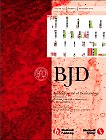
Br J Dermatol. 2007 Apr;156(4):728-32.
Abstract
BACKGROUND: Rosacea remains difficult to treat, despite many therapeutic options.
OBJECTIVES: To investigate the effect of pimecrolimus cream 1% (Elidel; Novartis Pharma, Nuremberg, Germany) in the treatment of papulopustular rosacea.
METHODS: Forty patients with rosacea (25 men and 15 women, mean age 58 years) were enrolled in a randomized, vehicle-controlled, double-blind study. For 4-8 weeks, patients applied pimecrolimus cream or vehicle twice daily to the involved areas on the face. Rosacea severity score, subjective severity assessment and quality of life assessment were obtained, along with photographic documentation.
RESULTS: Both treatment groups of 20 patients showed an improvement after 4 weeks. The differences were not significant (P > 0 x 05) with regard to mean absolute values, mean percentage changes from baseline, or mean absolute values as differences from baseline for the total score or scores of the different clinical signs (erythema, papulation, scaling and pustules). In the subjective severity score and the quality of life assessment, there was also no significant difference between pimecrolimus and the vehicle (P > 0 x 05).
CONCLUSIONS: Treatment of rosacea for 4-8 weeks with the topical calcineurin inhibitor pimecrolimus cream 1% was not more efficacious than treatment with the vehicle cream.
Geographic Variation and Risk of Skin Cancer in US Women
Abrar A. Qureshi, MD, MPH; Francine Laden, ScD; Graham A. Colditz, MD, DrPH; David J. Hunter, MBBS, DrPH
Arch Intern Med. 2008;168(5):501-507.
Abstract
Background Occurrences of melanoma, squamous cell carcinoma (SCC), and basal cell carcinoma (BCC) have been associated with varying geography. Our goal was to evaluate differences in risk of these skin cancers according to residence at varying UV indices at 3 time points.
Methods Prospective 1984-2002 study of 84 836 female nurses who lived in different UV index regions of the United States at birth and at 15 or 30 years of age. The outcome measure was diagnosis of melanoma, SCC, or BCC.
Results During the 18-year study, 420 cases of melanoma, 863 cases of SCC, and 8215 cases of BCC occurred. At 30 years of age, age-adjusted risks for SCC were 1.47 (95% confidence interval [CI], 1.22-1.76) and 1.90 (95% CI, 1.51-2.36) for women residing in states with a UV index of 6 (medium) and 7 or more (high), respectively. Although elevated, the age-adjusted risk of BCC at 30 years of age associated with residence in these states was substantially less. Although the risk of melanoma was not elevated for women living in these states at 30 years of age, it was significantly elevated among women living in states with UV indices of 6 at birth and at 15 years of age. There was no material change in risk estimates with multivariate adjustment. For women who reported living in states with UV indices of 7 or more at all 3 time points, the multivariate risk of SCC was highest.
Conclusions The risk of SCC is independently affected by residence in locations with medium and high UV indices; the gradient of risk is weaker for BCC; and the risk of melanoma does not change significantly across this gradient.
ايران درما |
